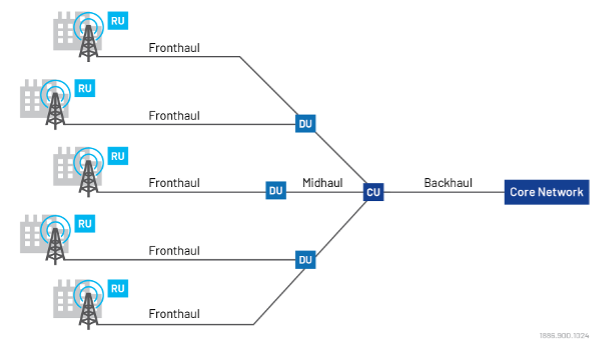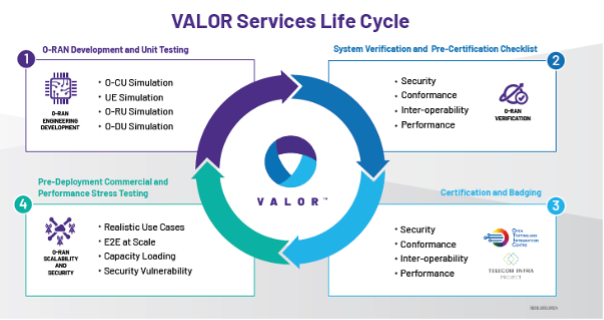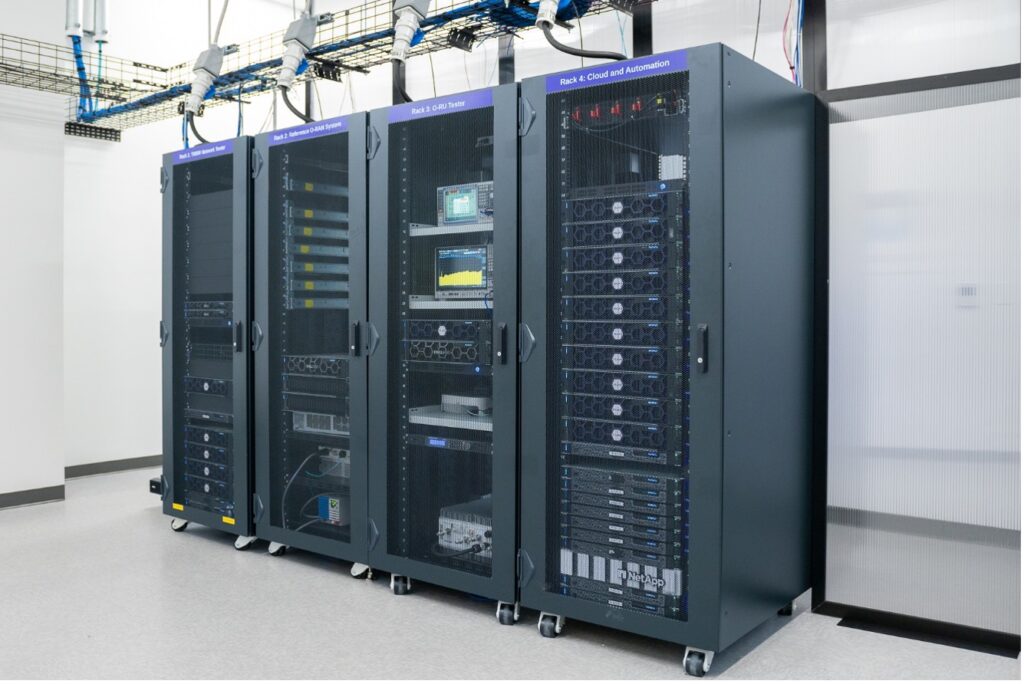The shift toward Open Radio Access Network (Open RAN) infrastructure, built on interoperable technologies from multiple vendors, is accelerating. To unlock the full potential of Open RAN – delivering cost efficiency, performance enhancements, and greater flexibility – it’s crucial to encourage innovative, agile technology vendors to join the market, alongside the larger, well-funded incumbents.
However, small and medium-sized enterprises (SMEs), start-ups, and scale-ups often find the complex testing requirements of Open RAN – such as system verification, security assessments, certification, and pre-deployment testing – daunting. Without access to comprehensive in-house testing facilities, many of these companies face significant time and cost burdens in bringing compliant, high-performance products to market. This complexity can act as a barrier, discouraging them from fully engaging in the Open RAN ecosystem.
Now, a new approach denoted as Lab-as-a-Service (LaaS) for Open RAN is democratizing testing for emerging Open RAN technology vendors by providing them with rapid access to comprehensive end-to-end and scalable testing for everything from product development to performance stress testing. The highly automated, on-demand ‘pay-as-you-go’ LaaS model reduces the need for extensive in-house testing and accelerates time-to-market by streamlining the development and pre-certification process and better preparing vendors for certification, badging and acceptance tests at OTICs and CSP labs.
Open RAN for businesses and technologies
Open RAN has the potential to accelerate the deployment of 5G, 5G Advanced, and future 6G services, driving innovation and offering significant benefits to technology suppliers, network operators, end users, and the broader economy. By fostering a more open and competitive ecosystem, Open RAN paves the way for faster advancements and greater flexibility, unlocking new opportunities across the entire telecommunications landscape. This is why governments worldwide have expressed support for Open RAN principles, cooperating internationally to increase openness in mobile networks as well as making domestic commitments such as the CHIPS Act’s allocation of $1.5 billion Public Wireless Supply Chain Innovation Fund for deploying Open RAN infrastructure.
The concept of Open RAN disaggregates the traditional radio access network infrastructure into modules connected by standardized interfaces (Figure 1). Among these, the open radio unit (O-RU) handles the RF and digital front end and parts of the physical layer, as well as the digital beamforming functionality. One or more radio units connect to a distributed unit (O-DU) that sits close to the O-RU and runs the radio link, media access control (MAC), and remaining parts of the physical layer not handled by the O-RU. The O-CU is the centralized unit that manages one or more distributed units and connects to the core network, dealing with radio resource control (RRC) and data-packet handling, including compression and security.

Figure 1. Open RAN divides the radio-access infrastructure into multiple standardized modules and interfaces
The Open RAN specifications, as developed by the O-RAN Alliance, aim to standardize the fronthaul interface between the O-RU and O-DU, and interoperability profiles for the midhaul interface between the O-DU and O-CU. In addition, the RAN Intelligent Controller (RIC) is a software-defined function that resides in the cloud and provides programmability.
By separating these elements of the network and standardizing the interfaces between them, Open RAN lets vendors focus their expertise and capabilities on developing specific items of equipment. This contrasts with the traditional model that requires companies to deliver a complete vertically integrated solution. As a result, smaller enterprises such as startups and scale-ups can bring individual innovations that add value, increase competition and accelerate deployment of new services.
Certification and badging
While opening the network can encourage new technology vendors to enter the market alongside established incumbents, any products placed on the market must offer strict assurances of performance and interoperability. Open RAN’s primary advantage is its open and modular architecture, which allows components from different vendors to work together seamlessly. However, rigorous testing is critical to ensure that products from various vendors provide the expected features and performance and can interoperate with equipment from other vendors without issues. Testing a module against the published standards and with different vendors’ equipment is critical to ensuring that it will integrate smoothly in multi-vendor environments.
The O-RAN Alliance, for example, oversees certification and badging for compliant modules, granted after successful evaluation at approved test facilities called Open Testing and Integration Centers (OTICs). An O-RAN certificate attests that an item of equipment is conformant to O-RAN specifications. O-RAN badging, on the other hand, confirms the equipment’s interoperability, or end-to-end functionality in the case of a complete O-RAN solution.
Product lifecycle testing
As part of the engineering process, companies need to test their products at various stages throughout development (Figure 2). In addition to highlighting any issues, testing allows vendors to experiment with new features and optimizations in a controlled environment.

Figure 2. Equipment-test requirements extend throughout the product lifecycle.
Moreover, informal testing immediately prior to performing official certification and badging tests can help avoid unexpected failures at the test house that can otherwise result in delays and extra expense. In addition, vendors often need to take approved equipment through dedicated pre-deployment tests in a realistic environment to verify commercial-grade performance.
Given the modular nature of Open RAN, with components sourced from multiple vendors, security testing is also essential to identify and mitigate potential risks. Through comprehensive security testing, vendors can identify vulnerabilities, ensure compliance with security standards and implement necessary safeguards to protect the network and user data.
By thoroughly testing products before they reach the customer, vendors can reduce the likelihood of post-deployment issues, thereby shortening the time-to-market and minimizing the need for costly and time-intensive troubleshooting.
However, the testing associated with Open RAN development, system verification, security, certification and pre-deployment is complex and the necessary equipment and systems represent a significant investment. Smaller companies often do not have the resources to establish their own dedicated testing lab and can face significant time and cost overheads to bring conformant products to market.
Test access difficulties
It is possible for companies to use an OTIC or commercial test lab services for system verification and pre-certification/pre-badge testing. However, there are only a handful of OTICs that offer such services in limited geographies, with varying levels of test coverage.
Also, while it is important for equipment vendors to support O-RAN Alliance PlugFest events that are held periodically at OTICs, and to connect with initiatives such as the Telecom Infra Project’s (TIP) Test & Integration (T&I) Group, these are not as suited to routine testing for development purposes.
There are gaps in the test services available to smaller companies. Frequent or ongoing testing at an external lab, during product development, is often not viable. Moreover, pre-deployment realistic and commercial grade performance testing is typically not available.
The emergence of hybrid physical and cloud-based Lab-as-a-Service (LaaS) models is helping to address these issues by providing services ranging from cloud-based environments for preliminary testing to extensive multi-cell load and stress testing that have previously inaccessible to smaller vendors.
Introducing hybrid, automated lab as a service
The LaaS model is conceived to be affordable and easily accessible, and is extensively automated. Through it, users effectively get an ‘on-demand’ test lab to use during product development, to make sure equipment performs as required and to prepare effectively for certification and badge tests at an authorized facility. The hybrid testing model comprises both a cloud-based lab portal and access to a physical lab, including provision for pre-deployment realistic and commercial-grade performance testing.
The facilities for this are usually expensive to buy and typically are costly to access through commercial test labs.


Figure 3. TIP has Announced its First Authorized Test Lab for Open RAN Testing in September: the VIAVI VALOR Lab in Chandler, AZ. Shown is its physical lab (top) and anechoic chamber (due for completion in 2025).
LaaS is still in its infancy with broad industry adoption needed. However key steps are being made, in particular TIP recently announced the first authorized test lab for Open RAN: VIAVI Automated Lab-as-a-Service for Open RAN (VALOR™), which is funded by the U.S. National Telecommunications and Information Administration (NTIA) Public Wireless Supply Chain Innovation Fund (PWSCIF).
As more LaaS facilities become available, we will start to see unique combinations of services, in addition to a core set of offerings. For example, if we take a look at the first TIP-approved LaaS facility, we can see a hybrid LaaS physical lab and cloud-based infrastructure, which supports flexible deployment and offers realistic, scalable carrier-grade testing, as well as an on-demand test suite that encompasses the entire product lifecycle, from functionality to high-capacity stress tests. The facility undertakes conformance and performance testing for O-RU, O-DU, and O-CU, end-to-end testing, and interoperability testing using both emulated and real equipment – including testing with large numbers of emulated user equipment (UEs), as well as channel conditions and traffic patterns.
And we can also see Massive MIMO and beamforming over-the-air (OTA) performance testing services, with a large 25’ x 35’ anechoic chamber in construction, and vulnerability testing such as denial of service (DoS), fuzzing, open fronthaul (OFH) interface testing, port scanning and O-CLOUD security.
This allows the LaaS facility to be complementary to most current existing industry testing labs, helping relieve authorized facilities of labor-intensive development testing and giving vendors a greater certainty of passing the official tests which, in turn, helps accelerate time-to-market for new products.
Conclusion
The Open RAN initiative has succeeded in bringing modularity to the mobile radio-access network infrastructure, establishing standardized interfaces that effectively promote interoperability between equipment from different vendors. Allowing various innovators to contribute different pieces of the puzzle frees network operators from vendor lock-in and makes the RAN equipment market more accessible to industry players across the spectrum, from startups to bigger players.
However, while the move can foster competition and innovation, practical challenges can dissuade smaller companies from entering. Setting up a lab for development, pre-certification/badging and pre-deployment testing is expensive and access to commercial lab services is sparse.
Hybrid on-demand Lab-as-a-Service models, such as the VIAVI VALOR facility, which is funded by the NTIA Public Wireless Supply Chain Innovation Fund, address these shortcomings with a combination of online and real-world services that leverage extensive automation for cost-effectiveness and conform to all applicable O-RAN Alliance and 3GPP specifications.
